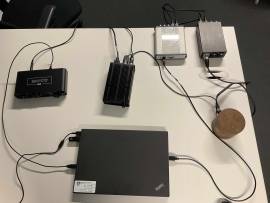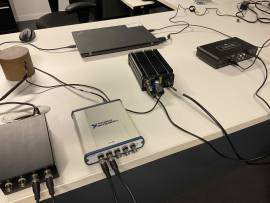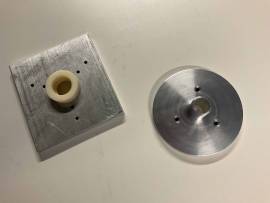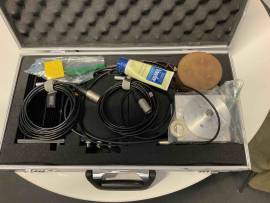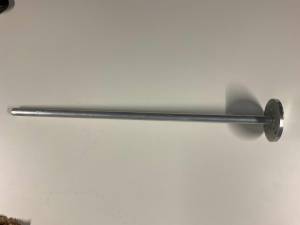CapteurZ Acoustic Impedance Measurement System
The CapteurZ Impedance Measurement System was purchased from the Centre de Transfert de Technologie du Mans (CTTM), Le Mans, France. It is a relatively easy-to-use impedance probe that provides accurate results up to about 4 kHz.
The system requires the use of the National Instruments USB-4431 signal acquisition card. The audio chirp signal can either be sent directly from the 1/8“ audio output port on a laptop or via an external audio interface. In the setup images below, we are using the MOTU M4 for audio output. A variety of adaptors have been fabricated to allow different musical instruments to be attached and measured. A few of these are shown in the image below.
A Brief HOW-TO Guide:
- After opening the CapteurZ software, select “Paramétrage→Définition des voies.”
- Click on “Browse,” then use the CTRL key to select individual channels in numerical order.
- If this is the first time using the system, it may be necessary to create a project directory first, before calibration (under “Projet→Nouveau”, especially need to specify a directory under “Répertoire de sauvegarde des projets”, otherwise you get error messages).
- Then select “Paramétrage→Nouvelle calibration du capteur.”
- Select “enregistrement automatique” checkbox at bottom to avoid having to save after each of the 4 frequency band calibrations (unless not sure about audio levels).
- If using the MOTU M4, the 1/4” adaptor on the cable going to the CapteurZ head should be connected to the Line Out #3 port on the back of the MOTU M4. Then make sure that the selected output audio device on the computer is set to “Out 3-4 (MOTU M Series)” and set the output gain on the computer to 50%. The CapteurZ amp level knob should be set to 5.5 (anything higher will produce undesirable results).
- If you see a strong peak in the frequency response of any of the sub-calibrations or in the final calibration, it is necessary to reduce the volume levels.
- After successful calibration, go to “Mesure” menu to start an actual measurement.
- The 60 cm aluminum pipe pictured below is a convenient object to test the measurement system with, since theoretical models of its impedance are readily available and fairly accurate.

